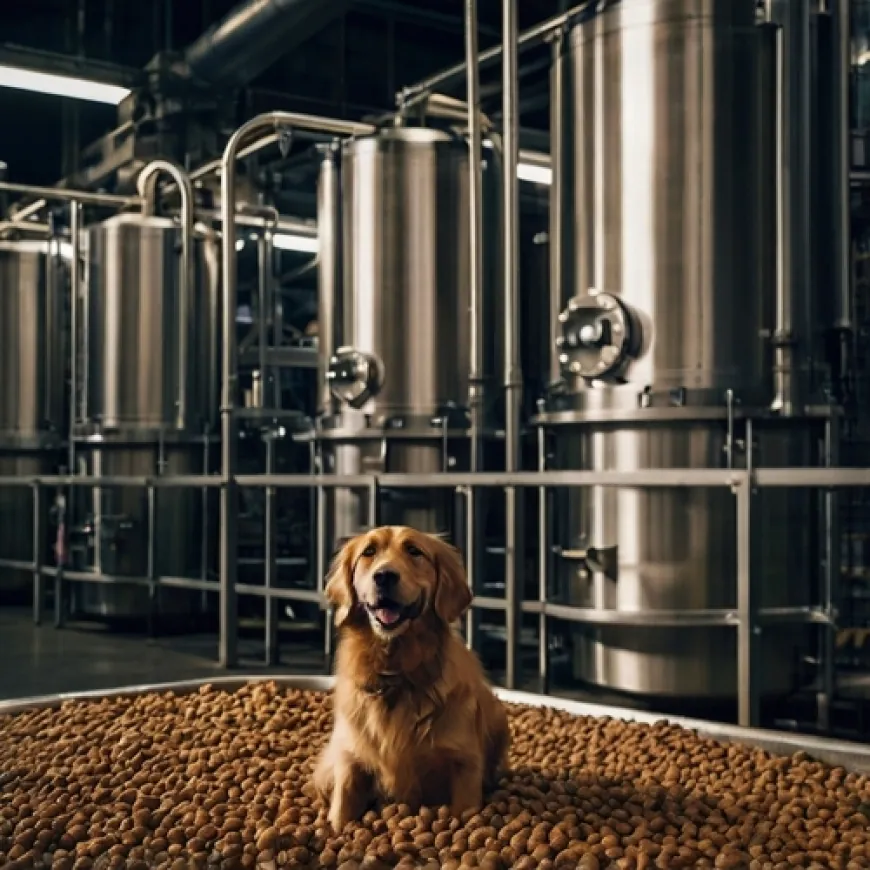Trends Shaping the China Pet Food Market by 2031
The China Pet Food Market is experiencing rapid growth as pet ownership continues to rise across the country

The China Pet Food Market is experiencing rapid growth as pet ownership continues to rise across the country. By 2031, this market is expected to witness significant changes, driven by evolving consumer preferences and increased awareness of pet nutrition. With the shift towards premium, natural, and organic pet food options, local and international brands are competing to meet the growing demand for high-quality products.

Rising Pet Ownership and Changing Attitudes
Pet ownership in China has skyrocketed in recent years, especially in urban areas where disposable incomes are higher. The trend has led to an increase in demand for nutritious and specialized pet food, as pet owners prioritize the health and well-being of their pets. Cats and dogs remain the most popular pets, and pet parents are increasingly viewing their animals as family members, resulting in a growing willingness to spend on high-end food products.
Premiumization of Pet Food
As more Chinese consumers seek premium options for their pets, the demand for high-quality, natural, and organic pet food is on the rise. This shift towards premiumization is largely due to the desire for healthier ingredients that improve pets' longevity and well-being. Products that are grain-free, gluten-free, or tailored to specific dietary needs are becoming more mainstream, as pet owners become more conscious of the health benefits associated with such options.
Focus on Functional and Specialized Nutrition
Another trend shaping the China pet food market is the focus on functional and specialized nutrition. Pet owners are increasingly looking for food that addresses specific health concerns such as weight management, joint health, or digestive issues. This has led to the development of specialized products such as senior pet food, breed-specific diets, and food formulated for pets with allergies or sensitivities.
E-commerce and Digitalization
E-commerce is transforming the way pet food is purchased in China. Online platforms like JD.com and Tmall have become popular avenues for consumers to buy pet products, including food. The convenience of online shopping, along with the availability of a wide range of products and price comparisons, has driven the growth of this sales channel. Additionally, social media platforms such as WeChat and Douyin play a significant role in influencing pet owners’ purchasing decisions through targeted advertising and influencer marketing.
Local Brands vs. International Competitors
While international brands have long dominated the pet food market in China, local brands are gaining ground. Domestic companies are increasingly producing high-quality pet food that meets the needs of the local market, often at more competitive prices than their international counterparts. Moreover, Chinese consumers are showing a preference for locally sourced products, which are perceived as being fresher and more in tune with local tastes and dietary preferences.
Sustainability and Ethical Sourcing
Sustainability is another key trend expected to impact the China pet food market by 2031. Many consumers are becoming more eco-conscious and are seeking pet food products that are sustainably sourced and produced. Brands that emphasize ethical sourcing of ingredients and environmentally friendly packaging are likely to see increased demand as the country continues to focus on sustainability goals.
Government Regulations and Quality Control
The Chinese government is tightening regulations surrounding pet food production, aiming to ensure higher safety standards and better quality control. This increased oversight is expected to further boost consumer confidence in locally produced pet food, as well as enhance the overall reputation of the market.
Conclusion
By 2031, the China pet food market will be characterized by continued growth, innovation, and premiumization. E-commerce, local production, and sustainability will be key drivers shaping the future of the industry, while pet owners’ desire for specialized, high-quality products will further fuel demand. As the market evolves, both local and international brands will need to adapt to meet the expectations of an increasingly discerning consumer base.












